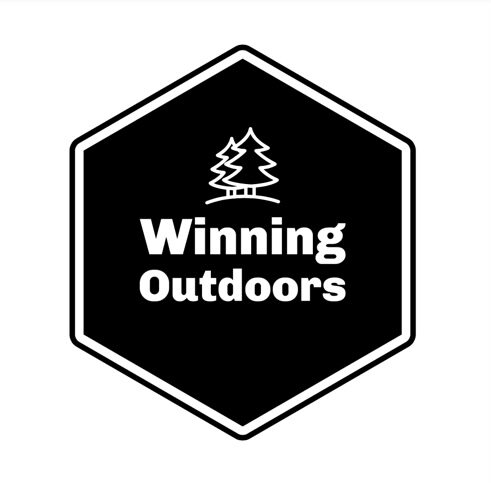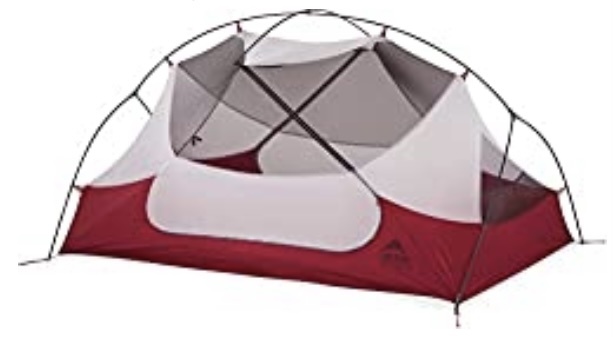I have wondered and often been asked, “What is a backpacking tent”? This tent comes with many names, like a lot of other items. If you were looking for this article, it is likely that you are not a seasoned backpacker or hiker, right? If you are seasoned, feel free to take a look at my recommendations and give some feedback through the comments or through email.
Today, we’ll be talking about what the term “Backpacking Tent” refers to and review five of my top picks for those looking to begin backpacking with a tent. We’ll mainly be focusing on items that are easy to set up for individuals that are new to this area of outdoor excitement.
As the name implies, a backpacking tent is designed for backpacking or hiking distances from where you begin your journey begins. While you can always use backpacking tents at the campsite beside your vehicle, you could be missing out on what nature has to offer outside of the campground. Larger tents often come with more bells and whistles, additional rooms and more space to stretch out and get comfortable. However, with those extra perks comes increased weight and setup complexity.
Weight Considerations
An ideal backpacking tent should be ultra-lightweight or at least lightweight. This is achieved by limiting features, size and construction material. While there are family backpacking tents, an ultra lightweight 4-person tent would be the max I would want to backpack with, preferably a 1-2 person. If you are going to be camping as a family, this is definitely something you should consider. Backpacking alone requires enough gear as it is, you’ll want to try to slim down as much as possible.
Durability and Uses
As mentioned earlier, constructing lightweight and ultra lightweight tents requires different materials or thickness in material than a standard tent. Often times, durability can become an issue due to the nature of the build. As with any gear, some will be more reliable than others so take that into consideration as well.
Cleaning and maintenance are also key components to ensure a long lasting purchase. Typically, warm water, a tent specific wash, and a sponge is all you’ll need. Harsh detergents, dishwashing liquid or bleach can harm the waterproof coating on your tent. DO NOT PUT IN THE WASHING MACHINE or DRYER!
Once you are ready to wash (Be sure to cover any electrical sockets), wet down your tent (or dirty area) apply tent specific wash, rub with sponge and rinse. Air dry preferably in the shade. While cleaning, don’t forget about those zippers. You can use a toothbrush or similar soft bristle brush to clean out any debris. Once it is dry, fold up and store in a cool, dry location. *Refer to manufactures recommendations for preferred cleaning methods.
Tents have many uses, but all are not the same. Think about what type of environment you will be camping in before making a purchase. Sun and heat naturally degrade most all products, including tents. Consider the temperatures where you live or will be backpacking. Will you be camping underneath a tree canopy or in direct sunlight? Some tents offer UV protection, such as the Big Agnes Copper Spur below, to help alleviate damage caused by the sun.
Tents typically have a 3 or 4-season rating. For those of you that are new, a 3-season tent would be your standard camping seasons; Spring, Summer and Fall. A 4-season rating would also include Winter.
Pricing
Prices vary just the same for tents as everything else. You can practically spend as much or as little as you want. I have tried to list out a variety of price ranges below with my recommendations. I realize there are some brand names that may not have made the list. The old adage “You get what you pay for” rings true to a certain extent here, however just because you pay more doesn’t guarantee better.
Here is what I recommend!
Coleman Sundome Tent is an Amazon Best Seller with over 34,000 reviews. While this tent is definitely on the heavier side, for someone who is just starting out, it is a cheaper option. It features two shock-corded poles for quick and easy setup, has inverted seams and welded corners to increase protection against the elements. It has 1 door, 1 electrical access port, and 1 pocket for gear.
- Price: $100
- Size (LxWxH): 84 x 60 x 48 inches
- Weight: 7.5lbs
- Capacity: 1-2
- Seasons: 3 Season
- Warranty: 1-yr Manf Limited, 30 Day Return Policy and 2-yr Protection Plan through seller available.
Pros: Simple, Easy Setup – Roomy – Great Price for Beginners
Cons: WEIGHT!
ALPS Mountaineering Lynx 1-Person is the next on my list. It’s freestanding, 2-pole design makes for an easy setup. It has sealed to keep out unwanted rainwater. The Lynx comes with 1 door, 1 gear loft, and 1 mesh pocket.
- Price: $110
- Size (LxWxH): 90 x 32 x 36 inches
- Weight: 4lbs
- Capacity: 1
- Seasons: 3 Season
- Warranty: Limited Lifetime Manf (Defects, does not cover normal wear and tear), 30 Day Return Policy and 2-yr Protection Plan through seller available.
Pros: Lightweight – Easy Setup – Affordable Price
Cons: Single Capacity, Limited head clearance
Big Agnes Tiger Wall Ultra Light is the next on my list. The Tiger Wall is extremely lightweight, which is perfect for those long hikes. If you are in the market for an ultralight backpacking tent, this has to be considered. It isn’t a freestanding design, so be aware of that. Seams are taped for added water protection.
- Price: $360
- Size (LxWxH): 86 x 38/28 x 39 inches
- Weight: 1.2bs
- Capacity: 1
- Seasons: 3 Season
- Warranty: Limited Lifetime Manf (Defects, does not cover normal wear and tear), 30 Day Return Policy and 2-yr Protection Plan through seller available.
Pros: Ultra Lightweight – Easy Setup – UV Protection
Cons: Limited Capacity – Not a Freestanding Design
MSR Hubba Hubba NX 2-Person lightweight backpacking tent is where we’ll stop next. Unified hub-and-pole system and color-coded clips makes setup a breeze. Xtreme Shield waterproof coating provides better protection than standard coatings.
- Price: $450
- Size (LxWxH):84 x 50 x 39 inches
- Weight: 3.8lbs
- Capacity: 2
- Seasons: 3 Season
- 3-yr Limited Manf (Defects, does not cover normal wear and tear), 30 Day Return Policy and 2-yr Protection Plan through seller available.
Pros: Ultra Lightweight – Easy Setup – Durability
Cons: Price
Big Agnes Copper Spur UV HL is the next on my list. It uses high volume pole architecture to provide steeper walls to allow for more shedding and increase spaciousness inside. The Copper Spur is one of the best lightweight backpacking tents on the market. It has sealed seams for additional weather protection. This tent also features UV protection.
- Price: $590
- Size (LxWxH): 88 x 52/42 x 40 inches
- Weight: 2.7lbs
- Capacity: 2
- Seasons: All Season
- Limited Lifetime Manf (Defects, does not cover normal wear and tear), 30 Day Return Policy and 2-yr Protection Plan through seller available.
Pros: Ultra Lightweight – Easy Setup – UV Protection
Cons: Price – Long Term Durability
What else is there to say?
I do ask that as you consider what tent would be best for you, think about these things. What is the application? What you need and don’t need? How many people will be with you? What can you afford to spend?
In wrapping up this post, I hope that I have increased some knowledge and understanding if you are new to backpacking, hiking or camping in general. I have been an outdoors guy all my life and am thankful for everyday I get to spend in it. Camping has always been a favorite of mine. I have had equipment that I loved and equipment that I disliked very much.
Again, if you have any questions, comments or would like to review a piece of gear; leave a comment, shoot me an email, or hit me up on the FB page. If you would like to see more discussions on gear, click here. Also, if you like to be notified when new content is posted, please subscribe to the newsletter.






